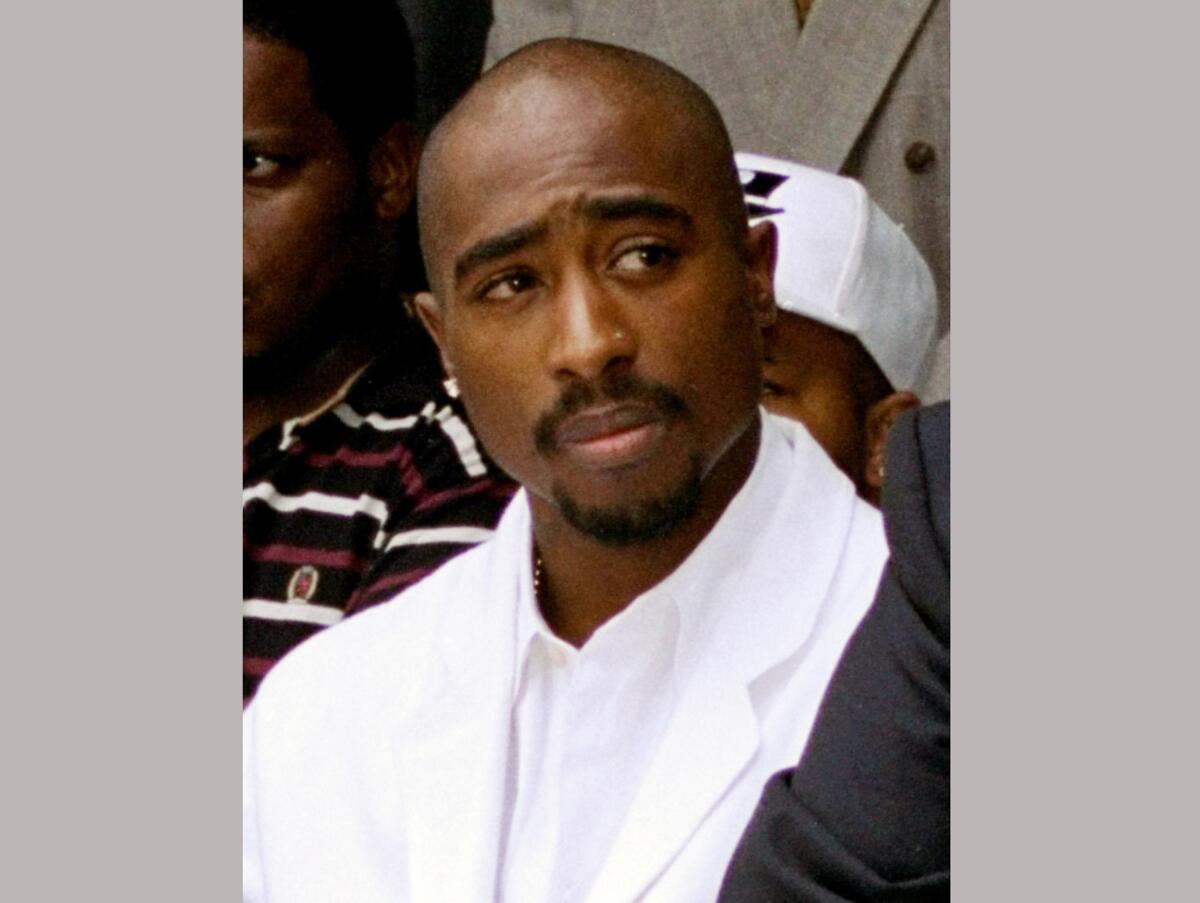Today’s Headlines: The recall election’s end is near, but California’s ugly political divide here to stay
- Share via
Here are the stories you shouldn’t miss today:
TOP STORIES
The recall election’s end is near, but California’s ugly political divide here to stay
Though the current referendum on Gov. Gavin Newsom will wrap up on Tuesday — with recent polls strongly suggesting that he will prevail — the regular election is only a year off. Election efforts will probably keep rolling forward, making the recall one more chapter in a continuing storyline of identity politics.
If Newsom loses on Tuesday, that upset could reshuffle the Democratic deck. If he retains office, the same slate of candidates is predicted to run again in 2022, though most, including Republican front-runner Larry Elder, have declined to state their intent until votes are counted.
One of the few areas where Republicans and Democrats can find any agreement is that they are tired of the identity politics that both sides used to frame the recall race, and share a frustrating feeling that real issues are being ignored.
Start your day right
Sign up for Essential California for the L.A. Times biggest news, features and recommendations in your inbox six days a week.
You may occasionally receive promotional content from the Los Angeles Times.
More recall election headlines
— Newsom slams GOP, while Elder targets governor’s wife as recall campaign closes
— Solemn remembrances, barbecue lunches and last-ditch pleas on the recall campaign’s final weekend.
— When Republican Arnold Schwarzenegger won the recall election of then-Gov. Gray Davis, he shook things up, despite a Legislature controlled by Democrats. That could happen again if Gov. Gavin Newsom loses.
— Most Asian Americans are against the recall, but some haven’t forgiven Newsom for his nail salon remark.
— Editorial endorsement: The many reasons to vote no on recalling Gov. Gavin Newsom.
Sign up for our California Politics newsletter to get the best of The Times’ state politics reporting, including full coverage of the recall election and the latest action in Sacramento.
COVID-19 got this medical team into homeless camps. What about after the pandemic?
Street medicine has been around in Los Angeles for years as health providers have tried to reach the surging numbers of people on the streets — more than 66,000 countywide in the last count.
For the L.A. County Department of Health Services, COVID-19 marked the beginning of its own street medicine teams venturing into encampments. Their hope is that it won’t be the end.
The virus is just one in a battery of health threats to homeless people, who are nearly three times more likely to die than people of the same age and gender in the general population, according to an L.A. County Department of Public Health analysis.
More top coronavirus headlines
— Don’t assume that because COVID-19 vaccines have been shown to protect adults and adolescents quite safely that the same vaccines in the same doses will work just as well for younger children. But could they be moving a little more quickly?
— The contact tracing system — considered a key tool in slowing the spread of the virus — has faced obstacles from the start of the pandemic, when it repeatedly faltered in containing workplace outbreaks. Now contact tracers are finding it increasingly difficult to reach people.
— Thousands of San Diego County healthcare workers seek vaccine exemptions, citing religion.
— Northern Idaho has a long and deep streak of anti-government activism that has confounded attempts to battle a COVID-19 outbreak overwhelming hospitals in the deeply conservative region.
For more, sign up for Coronavirus Today, a special edition of The Times’ Health and Science newsletter.
Our daily news podcast
If you’re a fan of this newsletter, you’ll probably love our new daily podcast, “The Times,” hosted by columnist Gustavo Arellano, along with reporters from across our newsroom. Every weekday, it takes you beyond the headlines. Subscribe on Apple Podcasts and follow on Spotify.
OUR MUST-READS FROM THE WEEKEND
— Hollywood finally has its movie museum. Inside the dramatic journey and what’s at risk.
— Remembrance, reflection and a burst of political rancor: U.S. marks 20 years since 9/11 attacks
— Wait times at Disneyland and Universal Studios are way down. Here’s why
— Arellano: She feeds hundreds of homeless daily in Orange County. City officials want her out.
— At 91, Clint Eastwood throws a punch and rides a horse in his new movie. And he’s not ready to quit
— I hiked the 38.5- mile Trans-Catalina Trail so you’ll know what to expect.
FROM THE ARCHIVES
Twenty-five years ago today Tupac Shakur, the brilliant but tortured rap artist whose lyrics told of a life of guns, gangs and regrets, died in a Las Vegas hospital, six days after he was shot four times in a street ambush near the gambling city’s lavish strip. He was 25.
The rapper, whose “All Eyez on Me” album entered the national sales charts at No. 1 in February, was pronounced dead at 4:03 p.m. at University Medical Center of respiratory failure and cardiopulmonary arrest, a hospital spokesman said.
As soon as reports of the death were confirmed, Los Angeles rap and hip-hop radio stations began playing Shakur’s records and airing tributes to the rapper.

CALIFORNIA
— Firefighters were still struggling Sunday to contain the Route fire near Castaic, which had temporarily shut down the 5 Freeway in both directions. The fire has burned 454 acres of brush and chaparral as of Sunday morning, according to Angeles National Forest officials. The fire was 0% contained.
— Firefighters continued to make headway Sunday against two massive Northern California wildfires — the Caldor fire and the Dixie fire — as winds remained light and temperatures hovered only slightly above normal.
— West Hollywood city officials issued a sweeping vaccination mandate that will require people to show proof of inoculation against COVID-19 to enter restaurants, bars, gyms and other businesses with indoor operations.
— Construction begins this month on a nearly 300-foot-long seawall to protect the coastal bluffs below the heavily traveled railroad tracks in Del Mar. The seawall is the final stage of $11 million in emergency repairs needed to safeguard the tracks after a wide portion of the bluff collapsed in late February.
Support our journalism
Subscribe to the Los Angeles Times.
NATION-WORLD
— A historic ruling by Mexico’s Supreme Court last week is the latest in a series of victories for abortion rights advocates in Latin America, a largely Roman Catholic region that has long had some of the world’s most restrictive laws against the procedure.
— West Virginia hits daily record in new coronavirus cases; GOP governors continue to rail at Biden vaccine initiatives.
— The FBI released a newly declassified document related to logistical support given to two of the Saudi hijackers in the run-up to the Sept. 11, 2001, terrorist attacks.
HOLLYWOOD AND THE ARTS
— Can’t get that dang Applebee’s song out of your head? How “Fancy Like” took over TikTok and TV.
— “Shang-Chi” earns largest second-weekend box office since start of pandemic.
— How MTV VMAs host Doja Cat became 2021’s signature pop star.
— Britney Spears is engaged to longtime boyfriend Sam Asghari.
BUSINESS
— The last time it was “Hollywood’s Bloody Friday.” With no deal in sight, will crews strike again?
— The landmark building that publishing titan William Randolph Hearst built for his Los Angeles newspaper over a century ago has been restored to public life as surging development in its downtown neighborhood brings new apartments, hotels and offices.
SPORTS
— Matthew Stafford leads Rams to 34-14 victory over Bears at SoFi Stadium
— Max Scherzer records 3,000th strikeout, flirts with perfect game in Dodgers’ sweep.
— Despite mishaps, Chargers find road to a good start in win over Washington.
— Plaschke: In the wake of the Saturday Night Massacre, USC needs to remove Clay Helton immediately
Free online games
Get our free daily crossword puzzle, sudoku, word search and arcade games in our new game center at latimes.com/games.
OPINION
— Op-Ed: Why California’s slavery reparations task force has the power to transform us all
— Op-Ed: Why we should worry about Big Tech’s investment in a new brain technology.
— McManus: Congress still needs to fix the law that made the Jan. 6 riot possible. Mitch McConnell could help.
ONLY IN L.A.
No place has played a more central role in the creation of residential segregation than Los Angeles. With its fast-growing subdivisions and enormous real estate industry, the city shaped the divided neighborhoods and political arguments that drive America today.
The reason has much to do with California. Residential segregation is not natural, normal or historic. It was an early 20th century marketing invention of Realtors, a way to sell homes. Like many American innovations, it flourished first in California.
Power was at the heart of this change. Newly established all-white real estate boards, including the Los Angeles Realty Board, the largest in the country, organized the industry and came to control the vast majority of home sales. It took a cartel, its members trademarked as “Realtors,” to control whose money could buy a home — to limit America’s free market.
Today’s newsletter was curated by Seth Liss. Comments or ideas? Email us at headlines@latimes.com.
Sign up for Essential California
The most important California stories and recommendations in your inbox every morning.
You may occasionally receive promotional content from the Los Angeles Times.







